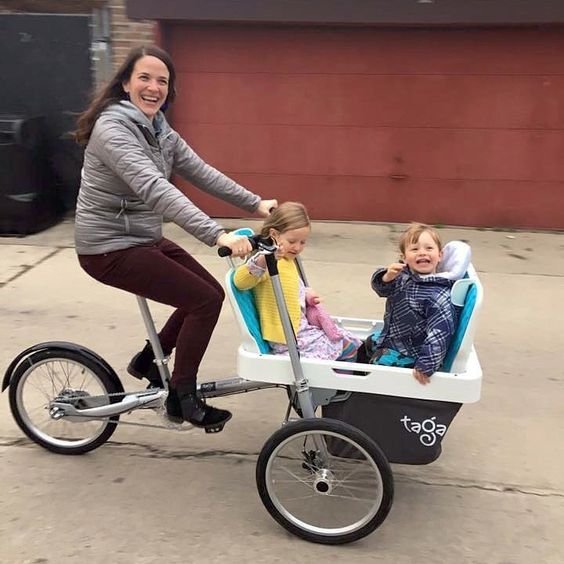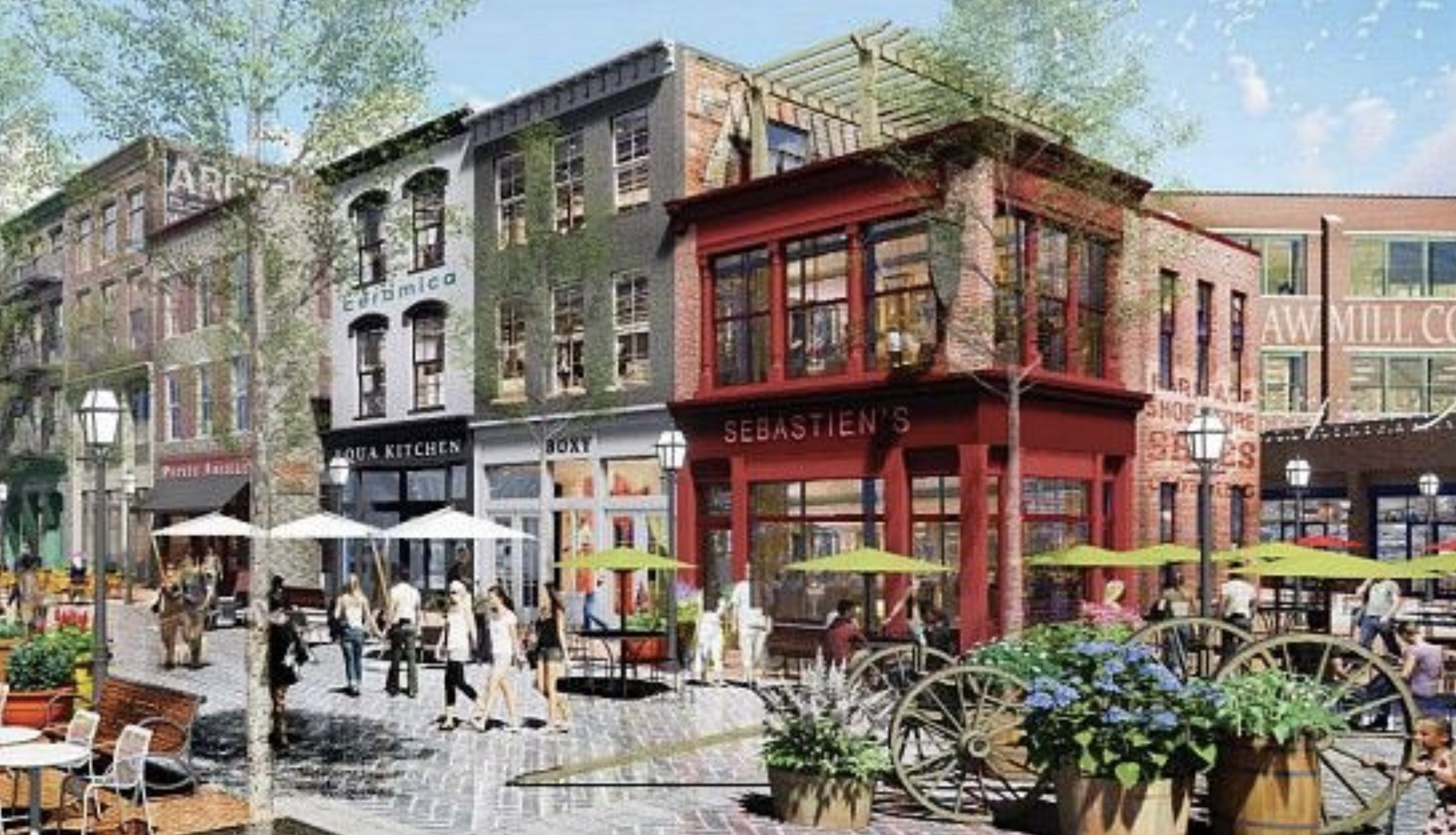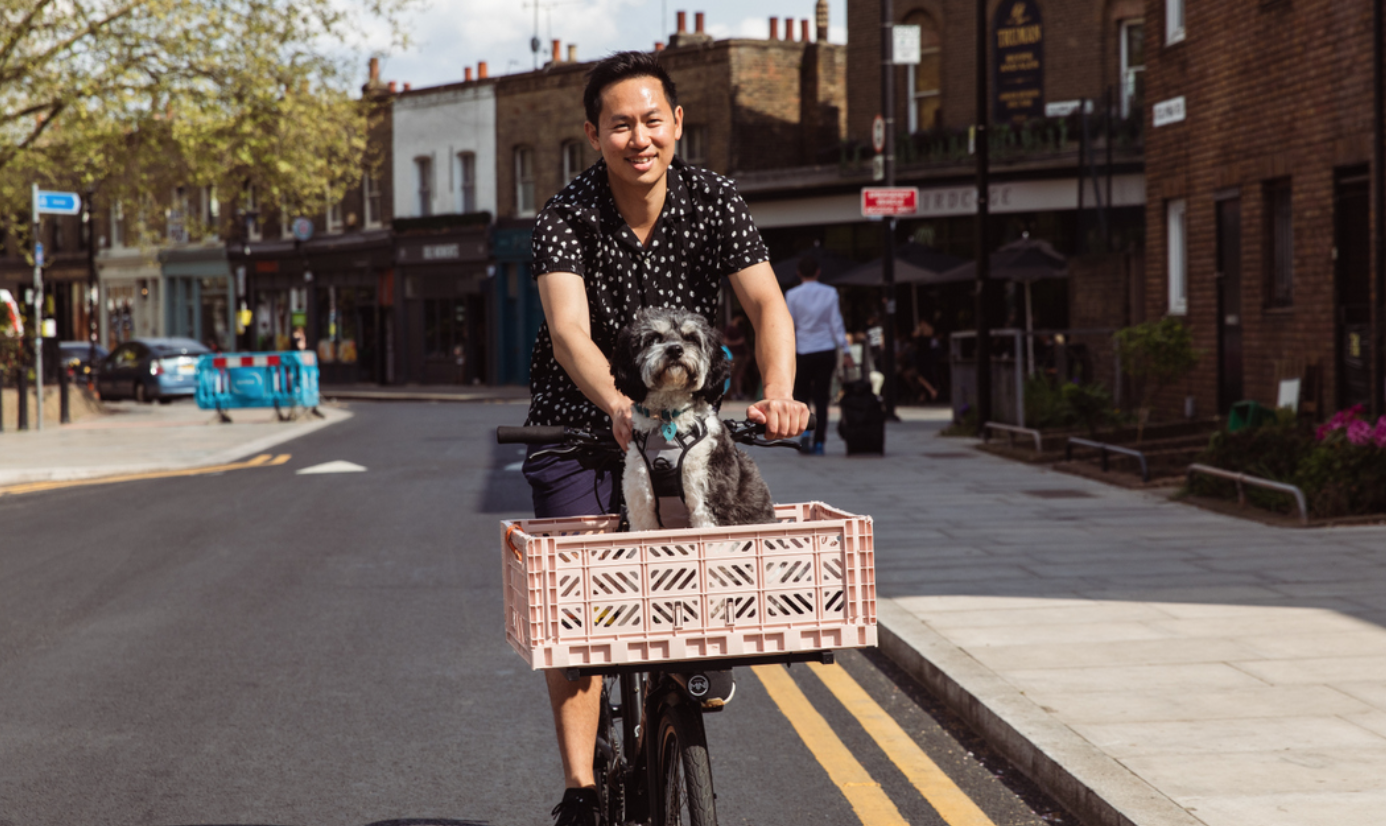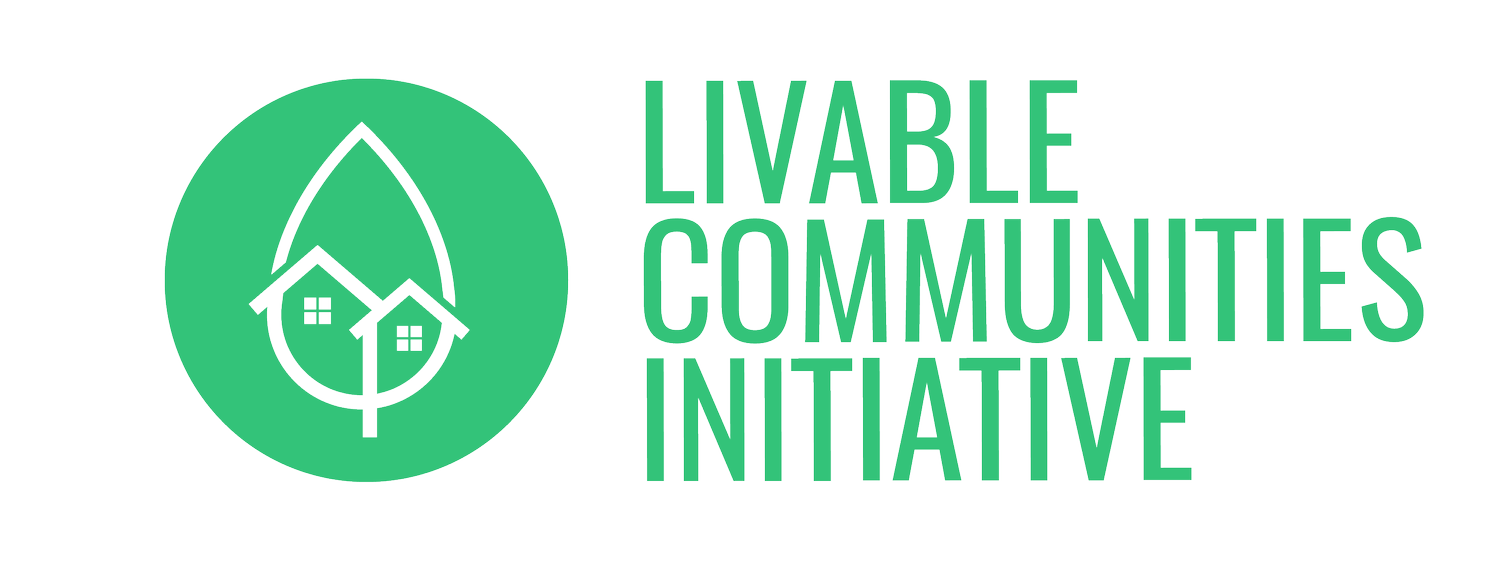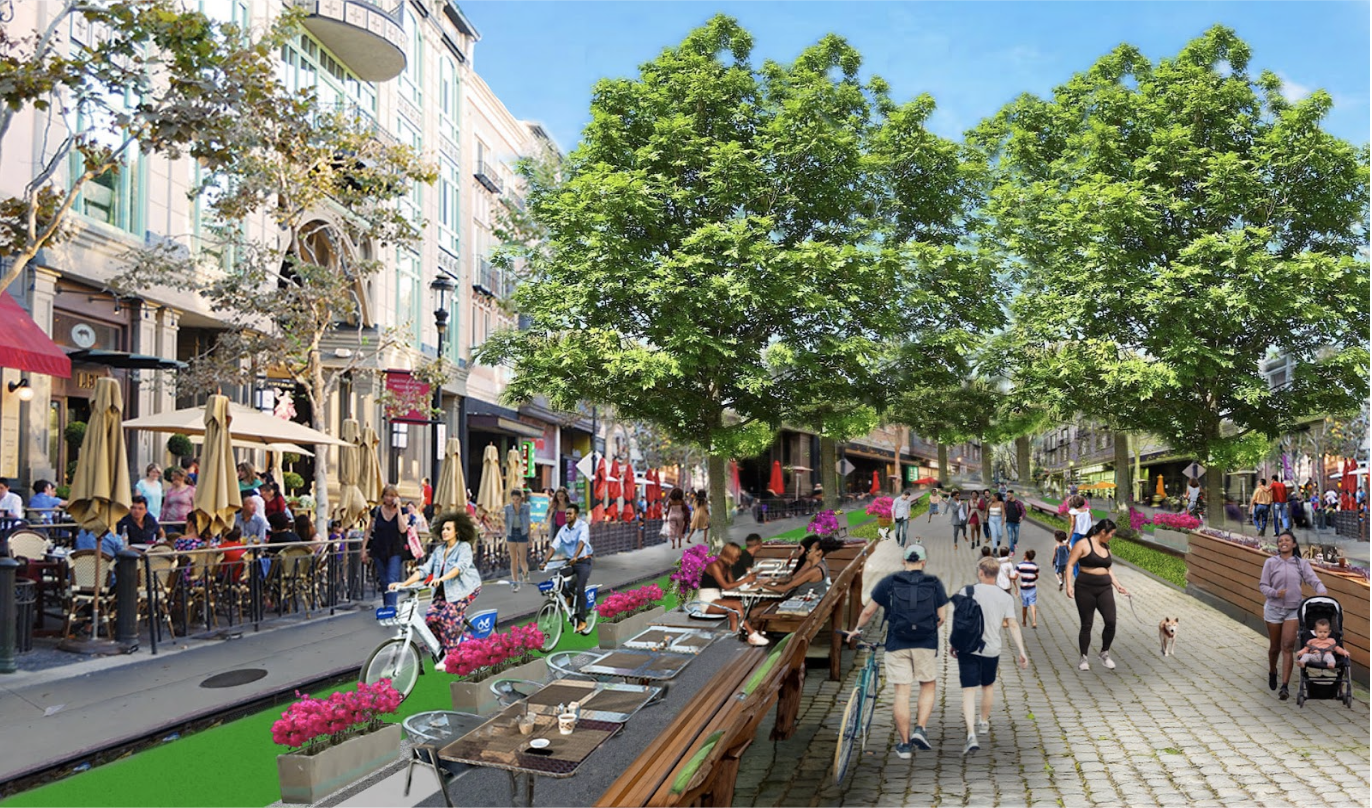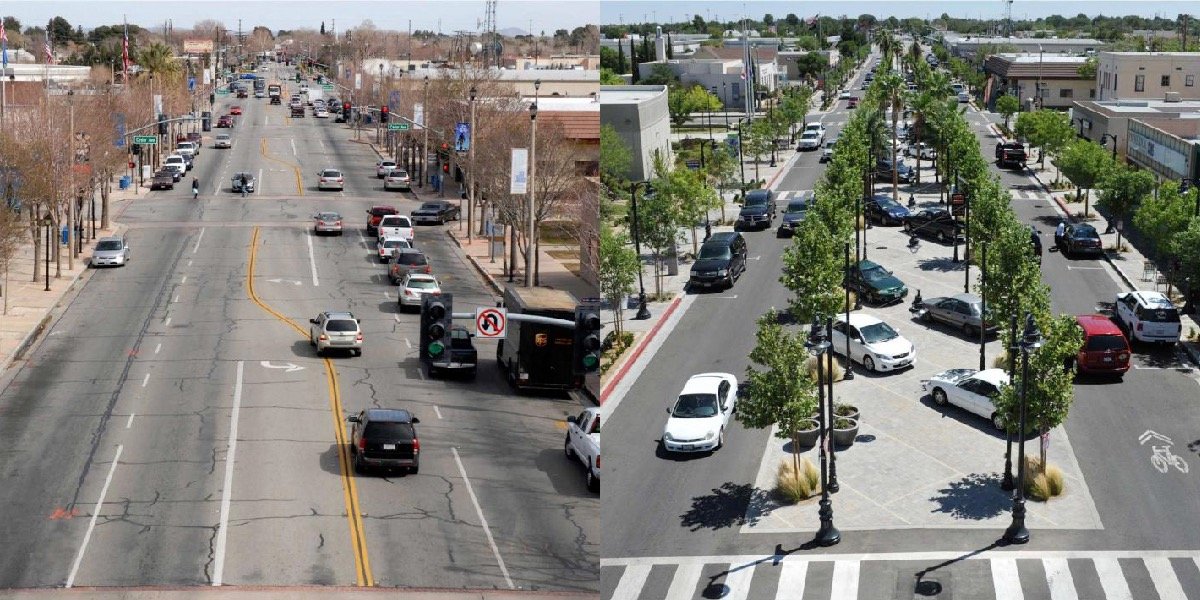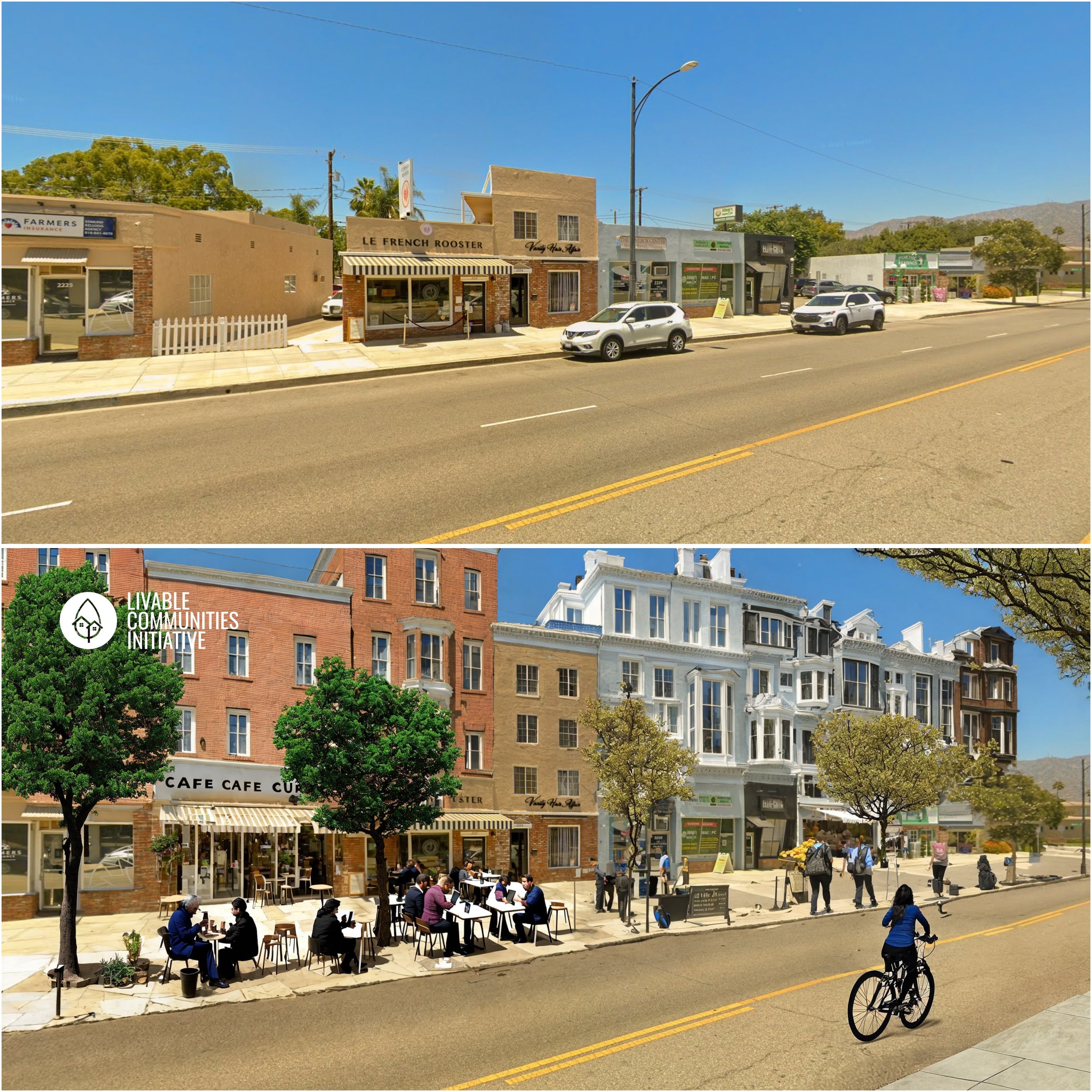Welcome to LCI Burbank
A common sense housing solution that fits into Burbank’s charming identity.
Burbank’s small town charm makes it stand out...
However, Burbank is now home to 105,000 residents and 160,000 jobs. With more employees than residents, our small city now overflows with commuters and requires workers to commute longer distances. This makes our streets busier and unsafe, and our air more polluted. The Livable Communities Initiative (LCI) has a plan to help address this as well as making our city more beautiful, vibrant and affordable.
The Problem:
The state of California has mandated that all cities must have a housing element that meets the development needs as defined by the state. In Burbank, the number of new housing units needed by 2029 is over 8,000. If our city doesn’t meet this need we will lose control of our own zoning, Like Santa Monica did. They failed to provide a plan for housing, and got an unwanted 40 story tower forcefully approved. Burbank residents have different opinions on different developments (Pickwick project, Front Ave, and other SB 35 projects), but most people agree we should be thoughtful and intentional, address traffic, and create a more beautiful city.
The LCI Solution:
Our plan is to build 3-5 stories of gentle density above small retail along carefully chosen commercial streets that are transformed to be walkable, bikeable, and livable. It is a vision for “15 minute” walkable communities in Burbank.
Lancaster Case Study:
In 2011, our neighbors in Lancaster used $11 Million of state money to redesign, rezone, and re-code their downtown thoroughfare, Lancaster Boulevard. That investment paid off tremendously, as it brought in a huge amount of private investment, a large amount of housing was built, and the street was made greener, cleaner, safer, and less congested. And the best part? It’s more beautiful as well.
Some highlights:
57 new businesses have opened on Lancaster Blvd
Revenue has increased 119% from 2007 to 2012 from the downtown area
Retail sales increased by 57%
Pedestrian involved collisions have decreased by 78%
Motor vehicle collisions decreased by 38%
Benefit: $273 million in new economic output
Tax revenue up 96%
50 new shops, restaurants, and businesses
800 permanent jobs created
1,100 temporary construction jobs
800 housing units built or rehabilitated
116,000 square feet of commercial space constructed or renovated
A true win all around for the residents and business owners of Lancaster.
Neighbors & Leaders who Support the LCI
“Southern California faces ongoing problems related to climate change and a lack of sufficient affordable housing. LCI presents a bold and innovative vision for the future of urban growth in Los Angeles. By constructing communities that are walkable, in which housing and jobs are in close proximity to each other, we can begin to promote climate resilience and begin to reduce the high cost of housing in our region. I am a proud supporter of LCI, and I look forward to seeing it come to fruition in Burbank.”
-Nick Schultz, Vice Mayor, Burbank City Council
"Burbank residents say our community has a “small town in the big city” feel. Creating truly walkable, bikable, and safe travel corridors, near small/micro businesses and affordable housing, all while focusing on green space and healthy outdoor experiences, is the way to truly live up to our city’s reputation.
We have ample opportunity to support dozens of 15 minute neighborhoods, to bring more character and vibrancy to our business districts, and to enhance the overall quality of life for all. When we have enough housing for our workforce, we will experience less car traffic and healthier air. When we have a complete bike network, our kids can get safely to school on their own. When we improve our bus system, seniors and those who cannot/prefer not to drive will have equitable access to our entire city with the same level of convenience and ease as those who use cars.
LCI is a breath of fresh air in our community, bringing innovation and future-focused ideas. I fully support LCI Burbank and look forward to seeing how we can all work together to take our city to the next level, into an even better future.”
-Tamala Takahashi, Burbank City Council Member
“For years, I’ve been giving versions of a talk called, “Data Driven Climate Action” and my takeaway point is this: we can reduce greenhouse gas emissions in the large amount that is necessary with our existing technology and at a far less cost than the current path we are on. Remodeling our region the LCI-way is intentional and effective climate action. We can go down the path we are currently on— reacting with fear to the latest calamity— whether they be fires, floods, deadly heat or homelessness. Or we can embrace an optimistic future where more people can enjoy clean air, water, access to jobs and amenities. We have nothing to lose but our pollution and time spent in traffic.”
-Grace Peng, PhD, Climate scientist, Multi-modal mom, Natural Resources Director, League of Women Voters Los Angeles County
“Just when you thought there was no hope for LA other than more sprawl, or awful boxy car congested apartment buildings, along comes this little idea that might just provide a way to create what people really want: small scale, walkable villages on traffic lite streets that people would actually choose to live on. By reducing cars the LCI will create foot and bike traffic, and it suggests to do it all without big developers and their compliant architects. It will mobilize an army of small builders who can build from a selection of pre-designed, pre-approved building types. The land owners will make some money, and all of this will create the ideal form of capitalist competition that will benefit us all.”
-Gerhard Mayer, architect, urbanist and visionary
“Los Angeles needs more housing, but the city puts what little housing it builds along wide streets choked with cars. This approach isn't efficient (we need more homes and aren't building them) but it's also unfair (we put our multifamily units along dangerous dirty corridors, effectively using apartment buildings as noise and pollution shields for more affluent neighborhoods of single family homes). The LCI offers a solution to this dilemma: not all of our bigger streets have to be so big, or so dirty or dangerous. By converting some of our large corridors into human-scaled environments, we can add housing in a way that is greener, safer, and fairer, and make the whole city more livable.”
-Michael Manville, Professor and Chair Department of Urban Planning, UCLA
“If equity is at the heart of what we say we care about, then LCI presents an equitable path forward that we should be paying attention to. For so long, access to a quality life, in all of its forms, has been denied to certain groups, particularly Black and Brown communities, and communities experiencing poverty. A plan that puts people within a 15-minute reach of what they need, in the way they say they need it, is the LCI way. It's people-centered. It's thoughtful. It is also possible if we simply believe and put action behind our belief.”
-Tunette Powell, PhD, Equity Practitioner and South LA Resident

Would you want to live here?
Fill out our survey if you or someone you know would want to live in a Livable Community:
Just imagine Olive Ave: 3-5 stories of housing above retail, more trees, al fresco dining and slow streets to bike safely…
Frequently Asked Questions
-
The LCI is a plan to address our housing, traffic and climate crisis by building 3-5 stories of gentle density above small retail along carefully chosen commercial streets that are transformed to be walkable, bikeable and livable. It is a vision for “15-minute” walkable communities where neighborhoods and residents’ daily and weekly needs (groceries, errands, jobs, schools, transit, parks and leisure options) are located within a 15-minute walk or bike ride.
-
Burbank residents are deeply concerned about affordability and traffic, and some also worry about large developments that they feel lock in car culture and/or don't feel part of the fabric of the city. The state of California’s Regional Housing Needs Allocation (RHNA) says that we need over 8,000 units of new housing to be built before 2029. If the city does not act, we could lose our chance to have a say, and we could find ourselves with projects that lack broad popular support. LCI is a road map to the community filling this need, housing our community members, and creating beautiful streets and architecture that feel like they fit in the fabric of the city.
-
LCI’s holistic, neighborhood oriented plan is supported by the majority of our city council, including Nick Schultz, and Burbank residents, and groups like Burbank Tenants Union.
-
Any street with small lots along the corridor is perfect for LCI. Parts of Burbank Boulevard, Magnolia Boulevard, San Fernando Boulevard, South Victory Boulevard and West Olive Avenue are all perfect. The comprehensive LCI plan would allow Burbank to hit all of its housing needs, without displacing anyone, while keeping the small storefronts that give Burbank its charm.
-
That is up to you, our residents! LCI buildings aim to fit in to a local vernacular. Supporters have suggested classic small-town Greek Revival Townhouse architecture, 19th century houses that blend Colonial and Federal influence, or maybe a flash of Art Deco like our city hall. These are the styles that made Burbank what it is today.
With pre-entitled architectural "Standard Plans," the neighbors can literally pick which designs they want to encourage builders and property owners to utilize on an LCI street near them.
-
Our small businesses are what makes coming to Burbank so much fun. They will stay put. The LCI plan provides a means to protect businesses and business owners while the property is improved.
-
LCI buildings are even more safe than current code calls for. Burbank does not write its own building code. In fact, we just adopt Los Angeles’ specifications, so our city is more friendly to big city construction than anything else. LCI hired building safety professionals to draft a more modern, up to date plan that will provide base line safety benchmarks that are more thorough than LA's code.
-
LCI apartment buildings have no parking with the possible exception of ADA and car share. It is housing for people who can't drive, don't drive, or want to live car-free (and they sign a contract that they won't park a car in the surrounding neighborhood). The market research shows that 50% of people are priced out of the used and new car market, and 92% of Gen Z-ers will "pay more" to live in a walkable neighborhood, and 24% of Americans will "pay a lot more." There is a pent-up and possibly large demand for car-free communities in SoCal with low-cost housing above neighborhood serving retail, walkability, bikeability, transit and jobs, which LCI is designed to provide.
Residents still have Uber, car share (and Turo), and can keep a car in a public parking lot, commercial lot, or at work.
-
With an LCI, neighbors can choose where they want the city's housing and what they want it to look like. They also get to choose what the height and vernacular is, and the exact architectural plans that are on file with the city and offer a low-cost, hassle-free optional off-the-shelf solution.
-
LCI is a comprehensive plan for human oriented places. As such, public “third places” and the Commons -- parks, playgrounds, bike lanes, a lush tree canopy -- are all part of the plan.

